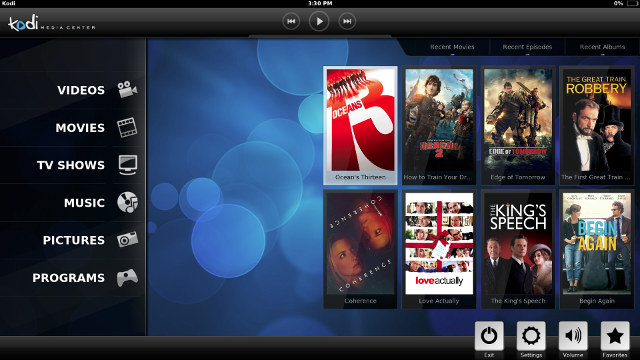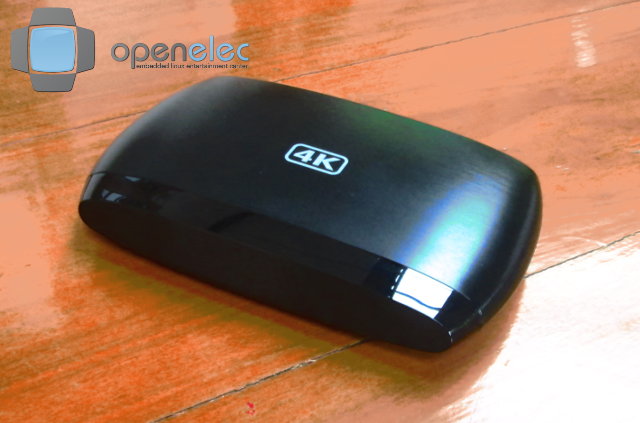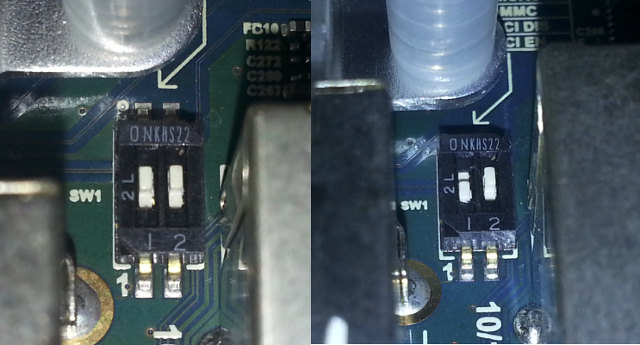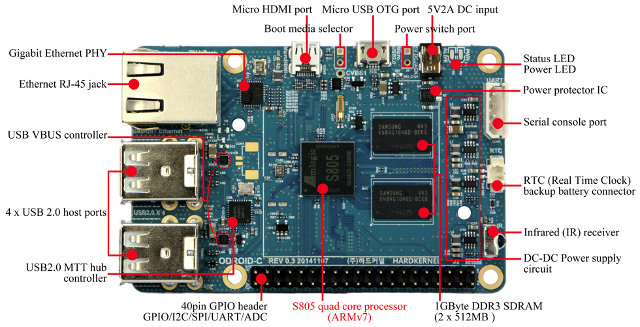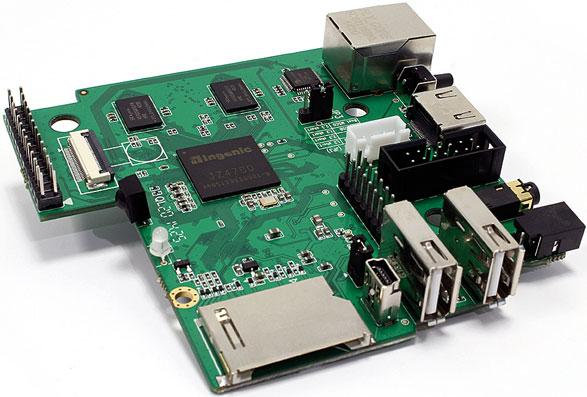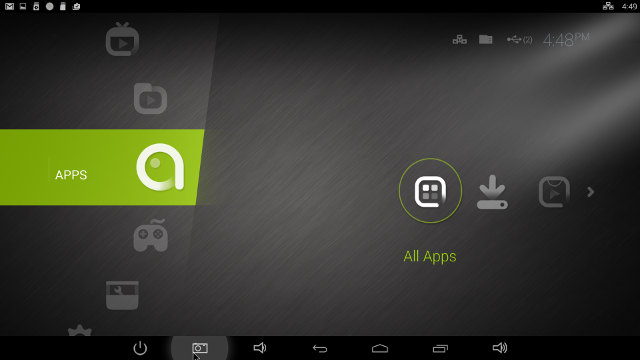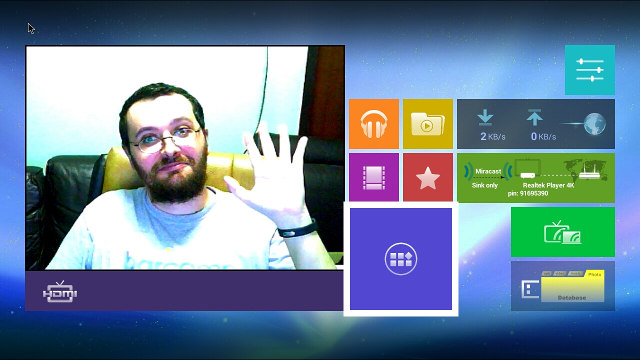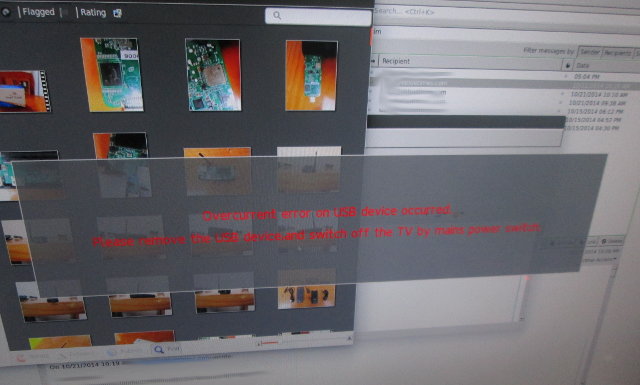XBMC (name) is definitely dead, as developers of the popular open source “entertainment center” project have announced the first stable Kodi release – the new name of XBMC – with XBMC 14.0 Helix. Key changes and new features include: Update to FFmpeg 2.4.4 – Adds H.265 / HEVC and VP9 video codecs support. Software decode only. Library Improvements – Scanning speed greatly improved, better UPnP support including with PlanOn and MediaBrowser servers. New Configuration features – Add-on update controls, choice of virtual keyboard layouts for tablets and remote control users in order to support multiple languages. Android, iOS and Embedded – 4K support for Amlogic S802, more ARM SoCs are now supported in Android, fast forward/rewind improvements. Airplay support fixed, except for Android. Freescale i.MX6 support for Kodi Linux. Windows, OSX, and Linux – Audio playback improvements. DXVA video playback has been improved for Windows too. A critical Kodi Linux […]
OpenELEC For Amlogic Media Players – MXIII, Tronsmart Vega S89, TV110 and CX-S806 (S812)
XBMC / Kodi is now working pretty well on Android devices, and even automatic frame rate switching is available on some Android platforms such as MINIX NEO X6. But if you want a pure XBMC experience, you may consider XBMC/Kodi Linux distributions such as OpenELEC also providing support for some USB DVB tuner dongles and PVR function, both of which are currently unavailable in Kodi for Android. We’ve also seen OpenELEC released for M8 TV Box, but Kerber, a Russian developer (or at least a Russian speaking developer) has also released OpenELEC 4.97.x for MXIII (Amlogic S802), Tronsmart Vega S89 (Amlogic S802), TV110 (Amlogic S805) , and CX-S806 (Amlogic S812) media players. The forum post is dated on August 2014, but it has been updated on December 12 with more up-to-date images: OpenELEC-Amlogic.MX3.arm-4.97.2.zip for MXIII (1GB) OpenELEC-Amlogic.S82.arm-4.97.2.zip for Tronsmart Vega S89 (2GB) OpenELEC-Amlogic.TV110.arm-4.97.2.zip for TV110 OpenELEC-Amlogic.S806.arm-4.97.2.zip for CX-S806 (Amlogic S812 […]
ODROID-XU3 Lite Board Ubuntu Review – Setup, Usability, and Performance
After testing ODROID-XU3 Lite with Android 4.4, and finding a workaround to some HDMI issues, I could finally try out Ubuntu, or rather Lubuntu with LXDE instead of Unity, in Hardkernel low cost octa-core development board. I’ll start this review by explaining how to install and setup Lubuntu on the board, followed by running various program to test the system usability as a desktop computer with LibreOffice, Chromium, XBMC, and 3D graphics, and finally run some performance tests with Phoronix Test Suit, build the Linux kernel natively, and transcode a video with avconf. Setting Up Ubuntu on ODROID-XU3 Lite All firmware images for ODROID development boards, can be found on odroid.in website, and if you want Ubuntu 14.04 image, go to ubuntu_14.04lts folder, to select the latest firmware file for your board. The latest image for ODROID-XU3 (Lite) is currently ubuntu-14.04.1lts-lubuntu-odroid-xu3-20141105.img.xz, it’s the same for micro SD card or eMMC […]
Hardkernel ODROID-C1 is a $35 Development Board Powered by Amlogic S805 Quad Core Processor
Amlogic S805 is a quad core Cortex A5 processor which has found it way into low cost devices such as MK808B Plus TV Stick which can be purchased for as low as $30, or full-sized TV box such as MXQ S85 or MINIX NEO X6. All this low cost devices are nice, but the full source code is not available in your want to adapt them to your need. Luckily, Amlogic releases both an Android SDK, and a buildroot for Linux with GPU and Video Processing Unit (VPU) support, so Hardkernel decided to go ahead, designed a board, and has just launched ODROID-C1 quad core development board for just $35, or the exact price of a Raspberry Pi Model B+, but with much greater specs. ODROID-C1 specifications: SoC- Amlogic S805 quad core Cortex-A5 processor with a Mali-450MP2 GPU (2x fragment cores + 2x vertex shader cores) System Memory – 1GB […]
MIPS Creator CI20 Development Board is Now Available for $65
When Imagination Technologies first announced their developer program for MIPS Creator CI20 board, they did not disclose the price, but based on the specifications I estimated that a decent price would be $70 o $80. The company has now announced broad availability of the board, which can be pre-ordered for just $65 or 50 GBP depending on the continent you live in, with shipping scheduled for the end of January 2015. This development board is based on Ingenic JZ4780 dual core MIPS processor with 1GB DDR3, 8GB flash, and features an HDMI output up to 1080p, Audio in and out, a Fast Ethernet RJ45 port, a Wireless module with Bluetooth 4.0 and Wi-Fi, an IR receiver, and expansion headers. Several projects have already been ported by developers who got their free board a few months, ago including XBMC/Kodi, several games such as Spiral Episode 1, and beside Android 4.4 and […]
Review of Open Hour Chameleon Android Media Player
Open Hour Chameleon is yet another Rockchip RK3288 based Android TV box, but it comes with aluminum enclosure, and boots from SD card instead of internal storage like all other devices I’ve seen on the market so far. Cloud Media (previously Syabas) also have a long history of making Linux based media players based on Sigma Designs processor, and when I worked on IPTV products, we used their PopCorn Hour has comparison platforms. So we should probably expect some interesting customization and features from the company. I’ve already posted pictures of Chameleon box and its board, so today, I’ll focus on reporting my experience with Android 4.4, and later I may also try their Lubuntu image. First Boot, Settings and First Impressions Normally I quickly try the remote control, and get it out of the way. But this time, I’ve spent a little bit more time with the remote since […]
Review of Realtek RTD1195 Based M-195 Android Media Player
M-195 is one of the new low cost Android media players based on Realtek RTD1195 processor featuring two Cortex A7 cores, and a Mali-400MP2 GPU, but providing high speed interface like USB 3.0, and Gigabit Ethernet, as well as 4K video decoding and output, including the latest H.265 / HEVC video codec. So before testing, I was expecting the box to be mainly interesting as a media player, and even maybe NAS, as Android performance for other tasks would be similar to Allwinner A20. I’ll already taken pictures of M-195 and its “902” board, so today we’ll find out how the device performs. First Boot, Settings and First Impressions I’ve used both the provided IR remote control, and Mele F10 Deluxe air mouse in this review, simply because I needed to press the Home button to come back to the Launcher from time to time, and the Home button on […]
Zero Devices Z5C Thinko 4K H.265 TV Stick Review
Zero Devices Z5C Think is one of the rare HDMI TV sitck powered by Rockchip RK3288 quad core Cortex A12/A17 processor available on the market. I’ve already take a few pictures of the device and internals, so today I’ll focus on testing the firmware, and performance of this thin and nice looking TV stick. First Boot, Settings and First Impressions There was a time when HDMI stick were powered by much slower, but power efficient processor based on Cortex A5 cores. One of these was CX-01 mini PC, and they could be powered by the USB port of the TV without problems. Now the processor are much more powerful, so normally you can’t power the device directly from the TV, but since I’ve seen people claim it was possible to drive RK3288 stick directly from the USB port of some TVs, I gave it a try, connected the stick to […]


